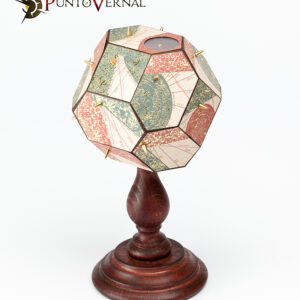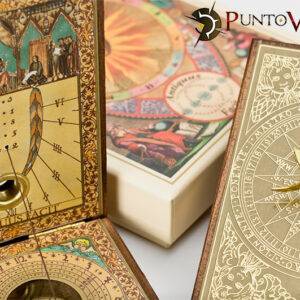POLYHEDRAL SUNDIAL
The polyhedral sundial represents the culmination of the knowledge of gnomonics, and demonstrates the skill and erudition of the gnomonist.
As it has different faces, they are not illuminated at the same time, so that, as the sun makes its journey, it illuminates some or others depending on the time and thus can be seen or consulted from different angles.
SUNDIALS
A sundial is an instrument that has been used since ancient times to measure time through the position of the sun in the sky and the shadow cast by an object known as a gnomon on a plane with hourly marks.
OPERATION
As it has different faces, they are not illuminated at the same time, so that as the sun makes its journey in the celestial vault, it illuminates some or others throughout the day depending on the time and thus can be seen or consulted from different angles.
It consists of eighteen hexagonal faces, of which seventeen correspond to sundials with different orientations and inclinations.
This polyhedral sundial is a faithful replica of the one made by the Italian Stefano Buonsignori in the 16th century, which is preserved in the Institute and Museum of Science in Florence. It consists of eighteen hexagonal faces, of which seventeen correspond to sundials with different orientations and inclinations.
It is accompanied by a manual with instructions for use.
Measurements:
Height: 16 cm
Diameter: 7.5 cm
VAT INCLUDED
https://en.wikipedia.org/wiki/Sundial














